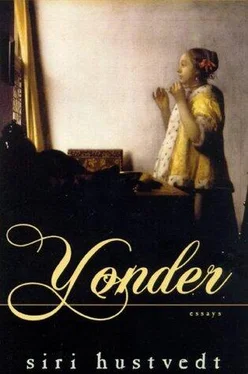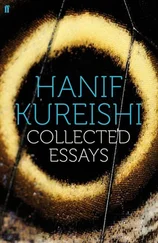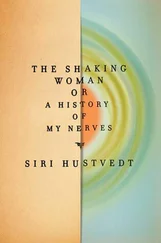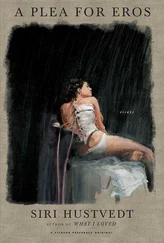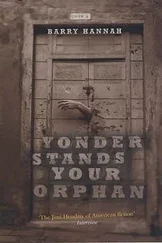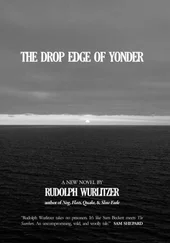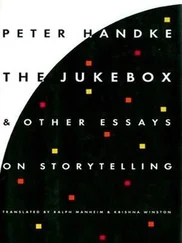The name Lizzie is a bridge between death and life. But Lizzie is also an incantation on the road to a word Eugene has been unable to speak. Jenny Wren gives Mortimer Lightwood the word to say to Eugene:
He stooped, and she whispered in his ear. She whispered in his ear one short word of a single syllable. Lightwood started, and looked at her.
‘Try it,’ said the little creature, with an excited and exultant face …
Some two hours afterwards, Mortimer Lightwood saw his [Eugene’s] consciousness come back, and instantly, but very tranquilly bent over him.
‘Don’t speak, Eugene. Do no more than look at me, and listen to me. You follow what I say.’
He moved his head in assent.
‘I am going from the point where we broke off. Is the word we should have come to — is it — Wife?’
‘O God bless you, Mortimer.’
The potential sentimentality of this passage is undercut by its oddness. Dickens frames the entire scene around a word — which he points out is “of a single syllable.” The word wife is passed on from one speaker to another as a translation or transformation of Lizzie into its collective context, the proper name changed into a signifier of a social role. Wife refers to a relation between people. It is the claiming of an identity that is formed through another and in the presence of others, and in this way it is like the novel’s title — a designation that may be claimed by many through others. Eugene cannot arrive at the word by himself. It must be given to him, and this single word begins the process of his rebirth. In this moment, among these people, language is being reclaimed as a structure of meanings that brings definition to human relations.
Lizzie’s power is rooted in memory. She is able to rescue Eugene, because she has learned the skill from her father and has not forgotten how to haul a body from the depths. The novel’s primary mnemonists are all women, and all women whose names are not subject to change. They are also characters conspicuously not prone to drowning. Drowning and its metaphorical associates — doubling, going to pieces, scattering into plural identities — are all part of the book’s driving fear: the fear of the corpse or of the unintegrated, formless body, which is identified with maternal space through the river. But these female, often maternal characters are not threatening representives of the chaotic space. On the contrary, they tame the wilderness through imaginative memory. Betty Higden, for example, who is a kind of lower-class saint, pulls together what is left of her family, ripped apart by poverty and death. She is subject to mild fits or visions that she calls the “deadness.” “There’s a deadness steals over me at times.… Now I seem to have Johnny in my arms — now, his mother — now his mother’s mother — now, I seem to be a child myself, a lying once again in the arms of my own mother.…” The word dead, associated with corpses, filth, and disintegration throughout the novel, is regenerated here through a vision of coherence that links the past and the present in the single physical act of holding and being held. Similarly, Mrs. Boffin, surrogate mother to the Harmon children when they were small, is haunted by faces that appear before her in “Harmony Jail”—the name given to Harmon Senior’s decrepit mansion:
‘The faces of the old man are all over the house tonight.… For a moment it was the old man’s, and then it got younger. For a moment it was both the children’s and then it got older. For a moment it was a strange face, and then it was all the faces.’
Both Betty Higden and Mrs. Boffin bind together in space what has flown apart in time: a family. Haunted by visions of resemblances, Mrs. Boffin, the only mother John Harmon has ever known, fills in the identity of the strange face as the lost son and, in doing so, brings the unrecognized spirit back from the dead. Betty Higden’s and Mrs. Boffin’s visions stand in opposition to the disintegrating surfaces of mirrors in the book, because they are pictures of relations among families that bring together the dead and the living. This rhythm of generations is part of a natural cycle of giving birth, growing old, and dying, and herein lies the healing impulse of the novel. What these women imagine is essentially what Mikhail Bakhtin describes as “idyllic time,” the time of folklore, which connects human life to the literal ground of experience. Time and space come together through countless generations who have shared the same earth. Bakhtin opposes “idyllic time” to “biographical time,” which is the temporal sequence of an individual life cut off from nature and so from regenerative possibility. But Dickens’s use of idyllic time is not purely folkloric. It is not the earth that binds one generation to another but the articulation of that common ground through a common language.
When Harmon recalls the event of his near death, his speech is an attempt to gather the fragments of the past into a semblance of coherence, into a narrative. His memory is pervaded with gaps that disturb time, disturb story, gaps that are metaphorically bound to Mr. Venus’s incompletely articulated bodies. The “French Gentleman,” at first only a ribcage, gains a few more parts here and there as the story progresses, growing like a tiny model of narrative. When utterance becomes story, the coherence of narrative can fight the corrosion of forgetting. And a tale always presumes a listener, even if the one who hears is within the self. Dickens portrays the task of recollection as wrenching labor. The holes in Harmon’s narrative remain unfilled, but the telling, with its insistence on accuracy (“Is this still correct?”), is a struggle to articulate cryptic pieces into a whole as Harmon plays detective, investigating his own near death. The narrative must pass over “spaces” and “silences”—spots of absence and forgetfulness. It is impossible not to read the events Harmon recounts as an inner battle. Its only characters are a number of faceless men, “a figure like myself,” an “unintelligible something,” and a teller who denies the validity of using the word I to tell his tale. Like Oedipus, Harmon is both subject and object of his investigation, a search that at every turn unveils a version of the self.
“I find myself an embodied conundrum,” says Eugene Wrayburn and “Riddle-me-ree.” Headstone suffers a seizure and forgets. Harmon cannot remember. “My mystery,” he says. Memories are pieces of the self — the mysterious jumble of the past in the present — and the novel’s central act of reconstruction, which comes to mean going home, making a narrative circle that takes the hero or heroine back to his or her origin. John Harmon must travel back before he can begin again. Memory must be movement, supplying the effective concatenation between one moment of life and the next. It must be repetition, but repetition with difference.
Jenny Wren, who supplies the magic word wife to Lightwood, is another feminine visionary in the novel. With the scraps and refuse from Fledgeby’s corrupt business she dresses her dolls, each one filled with the novel’s primary stuff: sawdust. Unlike Mr. Venus, who uses waste to articulate dead bodies, Jenny uses it to form new, imaginary bodies, lilliputian beings she manipulates to tell stories. And unlike Betty Higden’s and Mrs. Boffin’s visions, what Jenny sees are transcendent fictions. Her strange hallucinations of radiant children dressed in white, and of beautiful birds and flowers, are drawn from the stuff of story and myth: “I smell the white and the pink May in the hedges and all sorts of flowers that I was never among.” From the rooftop she calls to Riah:
Читать дальше
